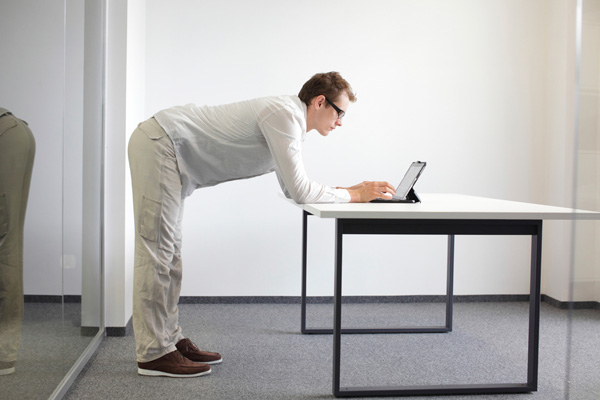- La Feria Community Holds Succesful Business Mixer Event
- Little Nashville to Take Place in Downtown Mercedes
- Lions Basketball Captures District Gold
- La Feria ISD Students Compete in Regional Chess Tournament
- Lions End First Half of 32-4A on a High Note
- La Feria ISD Held Another Successful Parent Conference
- Strong Appearance for Lions at Hidalgo Power Meet
- LFECHS Students Get to Meet Local Actress
- Students Participate in Marine Biology Camp
- Two LFECHS Students Qualify for All-State Band
Study: Desks Designed to Increase Standing Work
- Updated: October 23, 2015
by Eric Galatas
AUSTIN, Texas – According to a new University of Iowa study, employees with desks that force them to stand at regular intervals stood 60 minutes more per work day than co-workers with regular desks.
Lucas Carr, an assistant professor and member of the Obesity Research and Education Initiative who worked on the study, says sitting 8 hours a day puts workers at risk for cardiovascular disease, high blood pressure and diabetes and becomes more of an issue with each passing year.
“The idea here is to really redesign the work environment, because most of us will be working for anywhere between 20 and 30 years,” says Carr. “So if somebody is sitting for 40 hours a week and for 30 years, you can imagine how those things would build up.”

According to a new study, employees with desks that force them to stand at regular intervals stood 60 minutes more per work day than co-workers with standard desks. Photo: Endopack/iStockphoto
Carr says doctors now recommend workers take a break from sitting at their desks to get their blood flowing at least once an hour.
He adds re-configuring work spaces could play a big role in fighting the obesity epidemic in the U.S. The study found employees with sit-stand desks burned up to 87 more calories a day and walked an additional six minutes at work than their sitting counterparts.
Carr notes the study focused on workers who had been using sit-stand desks for an average of one-point-eight years. He says, unlike an exercise bike that ends up collecting dust in the garage, workers continued using the new desks even after they had lost their novelty. Carr says if you can’t convince your boss to buy everyone a newfangled desk, there are still ways you can short circuit the negative impacts of sitting all day.
“One thing that I even recommend is for people just to drink more water,” says Carr. “By doing that it’s a natural reminder for you to get up and get away from your desk every 45 or 50 minutes and go to the restroom.”
Carr points out sedentary jobs have risen 83 percent since 1960 and now account for 43 percent of all jobs in the U.S. He says on average office workers sit more than 80 percent of the work day. So the next time your boss asks why you’re not sitting at your desk? “Sorry, doctor’s orders.”


